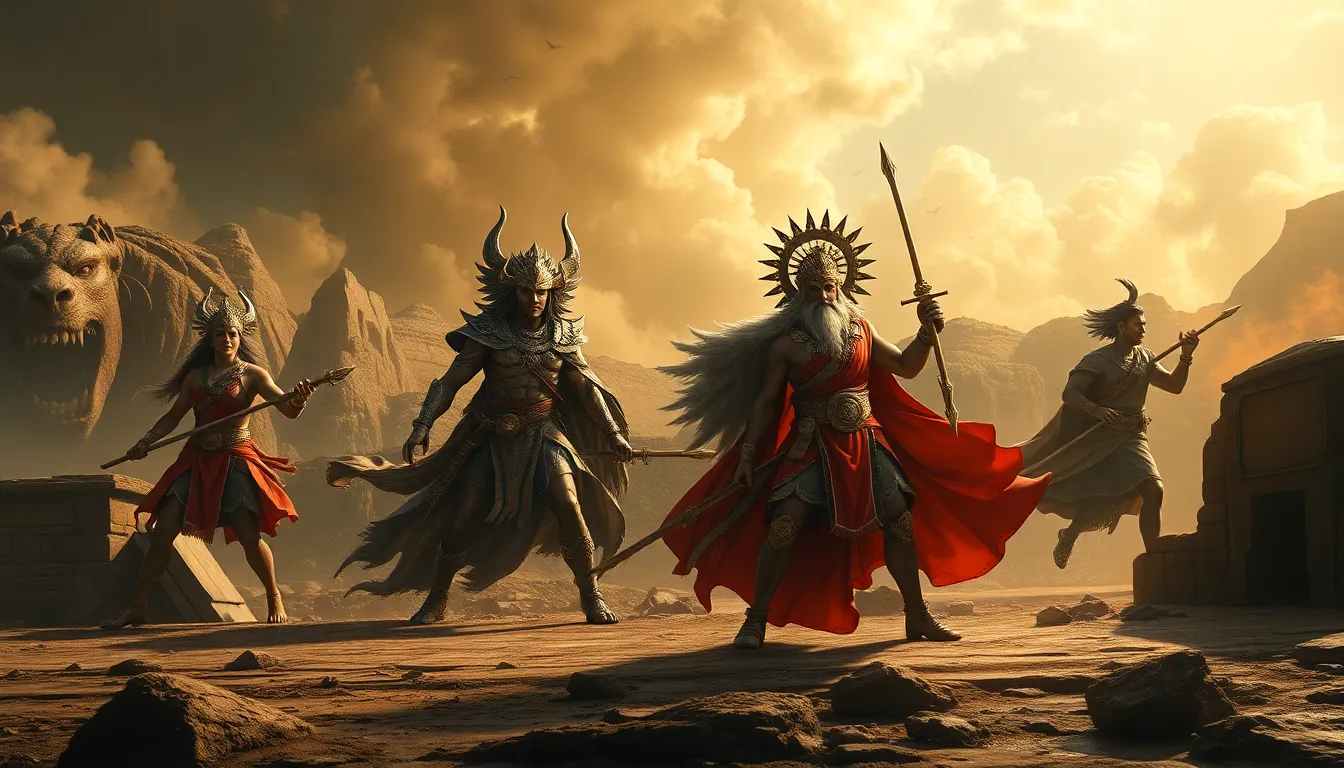Cultural Heroes: The Myths That Inspire Fearlessness
I. Introduction
Cultural heroes are figures who embody the values, beliefs, and aspirations of a society, often representing ideals of courage, strength, and integrity. They serve as symbols of hope and inspiration, illuminating the paths we can take in our lives. Myths play a crucial role in shaping the narratives surrounding these heroes, providing a framework through which we understand their significance and the lessons they impart.
This article explores how these myths inspire fearlessness, encouraging individuals to confront challenges and pursue their dreams with unwavering determination. By examining the role of cultural heroes in history, psychology, and contemporary society, we can appreciate their lasting impact on our collective consciousness.
II. The Concept of Fearlessness in Culture
Fearlessness can be defined as the ability to confront fear, pain, or adversity without succumbing to anxiety or despair. It is a significant trait that has been celebrated throughout history, as it embodies the spirit of resilience and determination.
In ancient societies, fearlessness was often revered as a vital characteristic of heroes and warriors. These figures were celebrated in myths and legends, serving as models of bravery that inspired their communities to stand strong in the face of adversity.
Psychologically, fearlessness can be understood in terms of courage and recklessness. Courage involves taking calculated risks and acting despite fear, while recklessness often leads to hasty, unwise decisions. Cultural heroes typically exemplify the former, showcasing how to navigate fear with wisdom and strength.
III. Archetypes of Cultural Heroes
Cultural heroes often fit into distinct archetypes, each representing different facets of fearlessness:
- The Warrior: Symbols of strength and bravery, the warrior archetype is often depicted in myths as a fighter who protects their community and stands against injustice.
- The Sage: This archetype embodies wisdom and resilience. Sages often guide others through difficult times, using their knowledge and experience to inspire courage.
- The Rebel: Challenging the status quo, rebels fight for a greater cause, demonstrating that fearlessness can manifest in the pursuit of social and political change.
IV. Myths and Legends: Case Studies
Throughout history, many figures have emerged as cultural heroes, inspiring fearlessness among their followers. Below are some notable examples:
- Hercules: In Greek mythology, Hercules is renowned for his strength and heroic deeds, often facing seemingly insurmountable challenges with courage and tenacity.
- Joan of Arc: A symbol of bravery and faith, Joan led French troops against English forces during the Hundred Years’ War, demonstrating fearless leadership and conviction.
- Coyote: In Native American mythology, Coyote is a trickster figure who represents adaptability and resilience, often teaching important life lessons through his exploits.
- Anansi: A West African folktale character, Anansi is a clever spider who uses his wit to overcome challenges, symbolizing intelligence and resourcefulness.
- Nelson Mandela: A modern cultural icon, Mandela’s fight against apartheid and his emphasis on reconciliation embody the spirit of fearlessness in the face of oppression.
- Malala Yousafzai: As an advocate for girls’ education, Malala’s courage in standing up to the Taliban exemplifies the power of fearlessness in pursuing justice and equality.
V. The Role of Storytelling in Cultivating Fearlessness
Storytelling has been a fundamental aspect of human culture, serving to transmit values, beliefs, and lessons from one generation to the next. Oral traditions have a profound impact on cultural identity, allowing communities to connect with their past and instill a sense of pride and purpose in their members.
Myths function as powerful tools for teaching moral lessons, often illustrating the consequences of fearlessness and cowardice. Through the tales of cultural heroes, individuals learn about the virtues of bravery, sacrifice, and resilience, encouraging them to face their fears.
Additionally, storytelling fosters community resilience by uniting individuals around shared narratives, creating a collective identity that empowers them to confront challenges together.
VI. Fearlessness in Contemporary Society
In today’s world, cultural heroes continue to influence modern activism and social movements. Their stories resonate with individuals seeking change, inspiring them to act fearlessly in pursuit of justice.
Media representations of heroes also shape public perceptions, often glorifying certain figures while omitting the complexities of their narratives. This can lead to simplistic views of heroism that fail to capture the nuances of their struggles.
Notable contemporary figures embodying cultural heroism include:
- Greta Thunberg: As a climate activist, Thunberg’s fearless advocacy for environmental justice has mobilized millions around the globe.
- Barack Obama: The first African American president of the United States, Obama’s journey serves as an inspiration for many, symbolizing hope and change.
VII. The Psychological Impact of Cultural Heroes
Cultural heroes serve as role models, impacting personal development and shaping aspirations. They provide individuals with examples of how to navigate challenges and pursue their goals with confidence.
Furthermore, cultural heroes influence collective identity, fostering a sense of belonging and motivation within communities. However, there are potential pitfalls to hero worship, such as idealization and the burden placed on those seen as heroes to maintain their status.
VIII. Critiques and Challenges of Hero Worship
While cultural heroes are often celebrated, there are critiques regarding the oversimplification of complex figures. Reducing individuals to mere symbols can obscure their flaws and the multifaceted nature of their journeys.
Additionally, cultural appropriation can impact the perception of heroes, leading to misrepresentation and the commodification of their stories. It is crucial to engage critically with cultural narratives, recognizing the importance of authenticity and context.
IX. Reimagining Cultural Heroes for Future Generations
To cultivate a richer understanding of heroism, it is essential to promote diversity in representations of heroes. This includes recognizing the contributions of individuals from various backgrounds and experiences.
Encouraging new narratives that reflect contemporary struggles allows for a broader definition of heroism, fostering a culture that values different forms of bravery and resilience.
Grassroots movements have the potential to create new cultural heroes, empowering individuals to take action and inspire others within their communities.
X. Conclusion
In conclusion, cultural heroes and the myths surrounding them play a vital role in inspiring fearlessness. From ancient legends to modern icons, these figures embody the values we aspire to uphold, encouraging us to confront our fears and pursue our dreams. As we reimagine cultural heroes for future generations, we can foster a more inclusive and diverse understanding of heroism, ensuring that the spirit of fearlessness continues to thrive.



